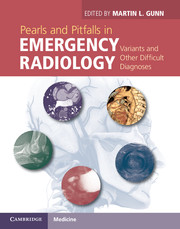Book contents
- Frontmatter
- Contents
- List of contributors
- Preface
- Acknowledgments
- Section 1 Brain, head, and neck
- Section 2 Spine
- Case 19 Variants of the upper cervical spine
- Case 20 Atlantoaxial rotatory fixation versus head rotation
- Case 21 Cervical flexion and extension radiographs after blunt trauma
- Case 22 Pseudosubluxation of C2–C3
- Case 23 Calcific tendinitis of the longus colli
- Case 24 Motion artifact simulating spinal fracture
- Case 25 Pars interarticularis defects
- Case 26 Limbus vertebra
- Case 27 Transitional vertebrae
- Case 28 Subtle injuries in ankylotic spine disorders
- Case 29 Spinal dural arteriovenous fistula
- Section 3 Thorax
- Section 4 Cardiovascular
- Section 5 Abdomen
- Section 6 Pelvis
- Section 7 Musculoskeletal
- Section 8 Pediatrics
- Index
- References
Case 21 - Cervical flexion and extension radiographs after blunt trauma
from Section 2 - Spine
Published online by Cambridge University Press: 05 March 2013
- Frontmatter
- Contents
- List of contributors
- Preface
- Acknowledgments
- Section 1 Brain, head, and neck
- Section 2 Spine
- Case 19 Variants of the upper cervical spine
- Case 20 Atlantoaxial rotatory fixation versus head rotation
- Case 21 Cervical flexion and extension radiographs after blunt trauma
- Case 22 Pseudosubluxation of C2–C3
- Case 23 Calcific tendinitis of the longus colli
- Case 24 Motion artifact simulating spinal fracture
- Case 25 Pars interarticularis defects
- Case 26 Limbus vertebra
- Case 27 Transitional vertebrae
- Case 28 Subtle injuries in ankylotic spine disorders
- Case 29 Spinal dural arteriovenous fistula
- Section 3 Thorax
- Section 4 Cardiovascular
- Section 5 Abdomen
- Section 6 Pelvis
- Section 7 Musculoskeletal
- Section 8 Pediatrics
- Index
- References
Summary
Imaging description
Flexion and extension radiographs of the cervical spine can be used in the setting of blunt trauma to assess for stability if the initial imaging with cervical spine radiography or CT is normal. Patients with a normal Glasgow Coma Score (GCS) who are not intoxicated, but who complain of persistent posterior midline tenderness may undergo this dynamic test as an alternative to MRI [1].
Dynamic evaluation of the cervical spine has been performed for many decades and numerous radiographic findings have been described. Despite this long history of use, specific validated measurable criteria to determine what constitutes a normal or abnormal radiographic flexion-extension (FE) study do not exist. The usual practice is to assess intervertebral body motion (subluxation and angulation) to indirectly determine presence or absence of an unstable cervical spine injury (Figure 21.1). The criteria used are mostly derived from cadaver models with very limited validation data for the trauma setting [2]. A wide variation exists in the degree of physiologic range of motion between cervical levels, among individuals, at different ages, and between genders [3, 4].
Information
- Type
- Chapter
- Information
- Pearls and Pitfalls in Emergency RadiologyVariants and Other Difficult Diagnoses, pp. 75 - 78Publisher: Cambridge University PressPrint publication year: 2013
